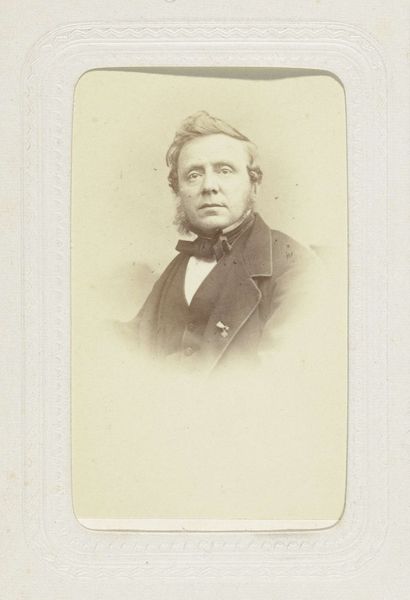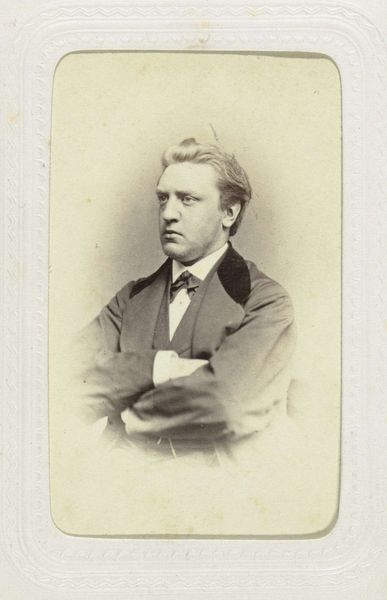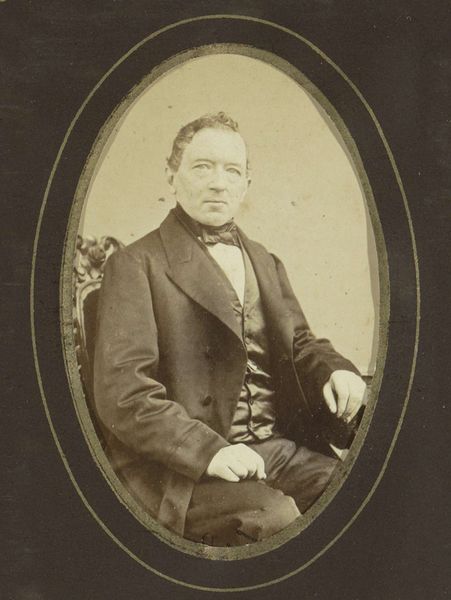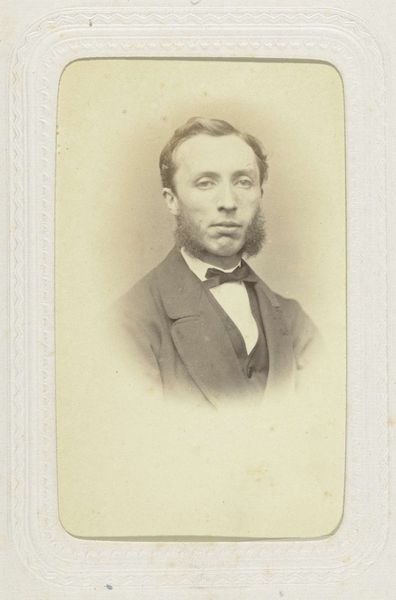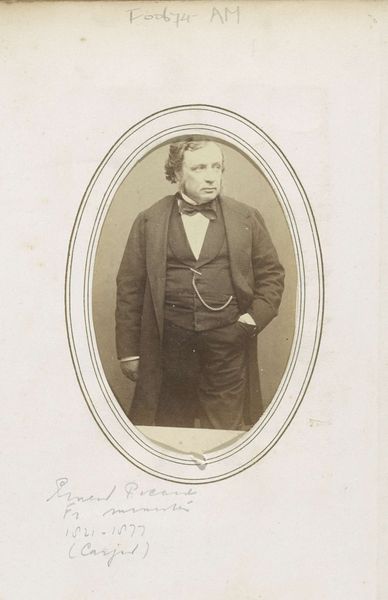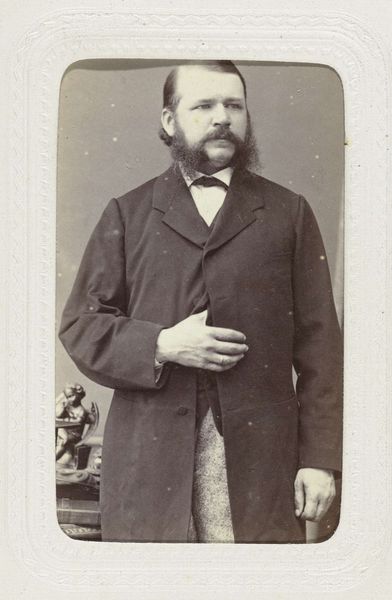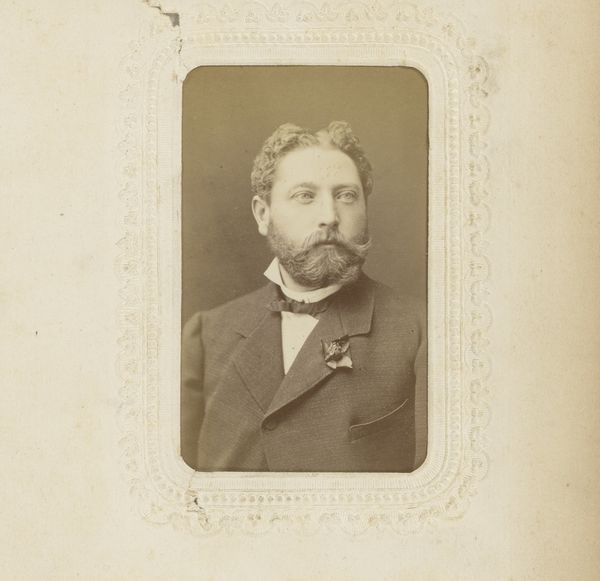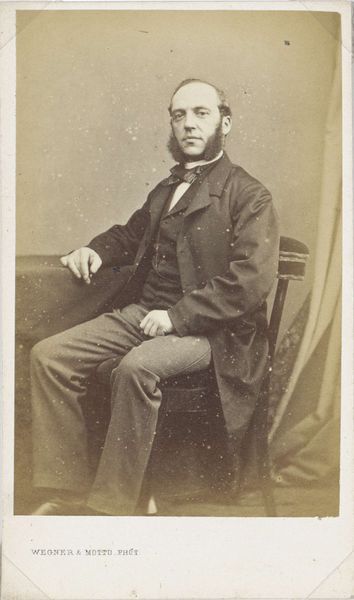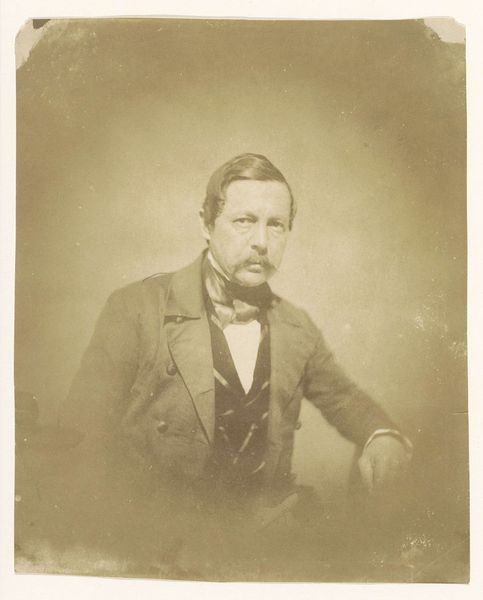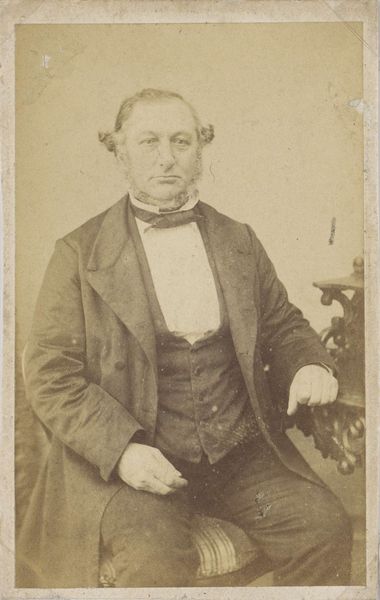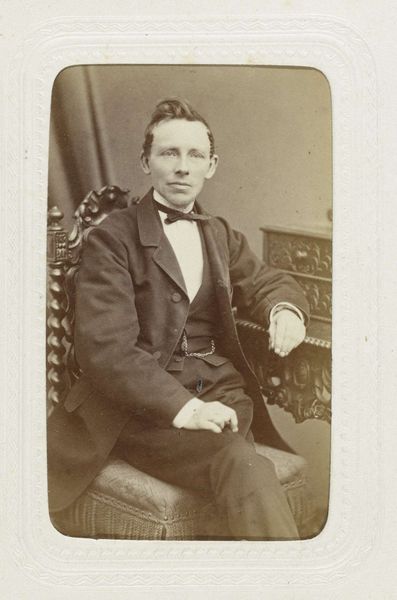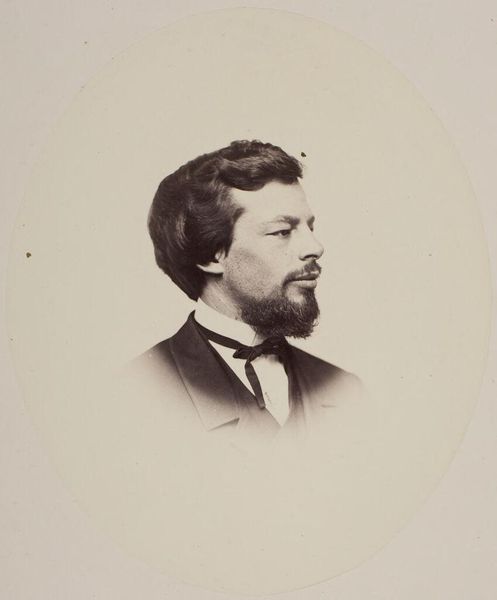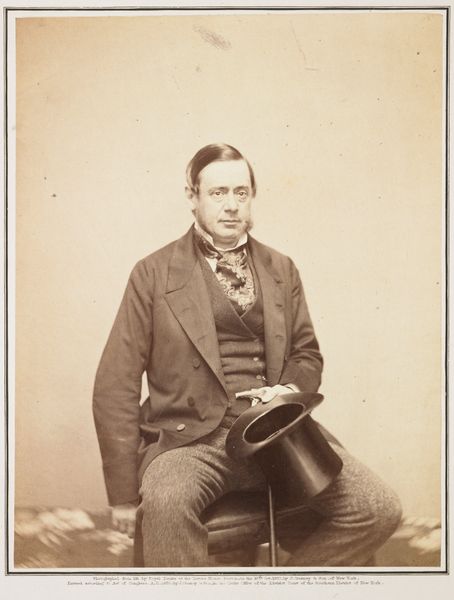
photography, gelatin-silver-print
#
portrait
#
self-portrait
#
photography
#
historical photography
#
gelatin-silver-print
#
realism
Dimensions: height 80 mm, width 54 mm, height 296 mm, width 225 mm
Copyright: Rijks Museum: Open Domain
Curator: Welcome! Before us, we have "Studioportret van een man op een stoel," a gelatin silver print from around 1863 to 1866, attributed to Franz Wilhelm Deutmann. Editor: It's quite striking, even now. There’s an immediate sense of solemnity—the monochrome tones, the sitter's unwavering gaze... it feels heavier than your average portrait. Curator: Certainly. This kind of studio portrait was gaining popularity in the mid-19th century. Photography was becoming more accessible, allowing individuals, particularly from the middle classes, to document their likeness and project a specific image of themselves to society. It’s a public act of self-representation. Editor: I notice the man is formally dressed; the suit, the vest, the meticulously groomed beard and bowtie all suggest respectability, but there’s a tension there too. He looks almost burdened by this constructed persona. How does Deutmann negotiate these societal expectations in his artistic expression? Curator: Deutmann operates within the confines of the period’s photographic conventions, yet the composition and the subject’s posture play with those conventions. His hand resting casually in his lap and slight tilt of the head could indicate a silent statement regarding bourgeois expectations. Editor: I find myself questioning who this man was and his role in the world at the time. The controlled aesthetic reflects an attempt to define masculinity, a notion fraught with contradictions during the era's social and political upheaval. Curator: Precisely. The photograph exists within a complex matrix of emerging photographic technologies, bourgeois self-fashioning, and societal gender constructs. Examining it through a lens of critical theory invites conversations about power, representation, and identity construction in that historical context. Editor: Seeing how individuals navigate, embrace, or subvert dominant cultural scripts offers crucial insight into their realities and resistances, giving their identities a kind of resonance. It is compelling that such dialogue continues through this portrait. Curator: I agree. This photograph demonstrates how art shapes societal dynamics, while reflecting it. Editor: It makes me think differently about my own place in that same framework, now centuries removed. Curator: Exactly. Art and cultural reflection continuously engage us in a perpetual discussion.
Comments
No comments
Be the first to comment and join the conversation on the ultimate creative platform.
